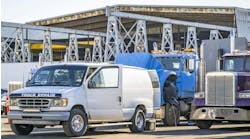Every asset has an ideal useful life — the time where it remains in service while still generating revenue. When it comes to trucking, there is no one right answer as to the length of an asset’s useful life. Different duty cycles, operating conditions and fleet goals impact how long a fleet decides to keep a truck, tractor or trailer.
Fortunately, there are some factors that, when taken together, can provide you with insight into the ideal useful life of an asset.
The four factors are:
- Understand your operation: Prior to putting together a spec for equipment, make sure you have a complete understanding of your current operation, taking into consideration things that may have changed since the last units were purchased. Knowing the mileage being run annually or by trip will provide valuable insight into setting up your equipment. This information also helps you understand how long you plan to keep the equipment, the estimated annual miles, the proper preventive maintenance (PM) cycle and anticipated running costs. Based on all of these factors, what should the proper residual value be for the asset at the time you plan to retire it? This will let you determine what your total cost of ownership would be, in addition to understanding trade cycles versus anticipated costs.
- Spec based on your priorities: Put together a list of what your objective is with the fleet and work with the OEM or dealer to develop a product that is best matched to achieve your objectives. Fuel economy based on operational needs, low operating costs, as well as true estimated resale value, are good areas to start your conversations. Should you consider automated manual transmissions? Should you consider extended warranty? Should you own the vehicle or lease it? Do you have the capability to maintain vehicles with all of the current advanced electronics? These are all important considerations.
- Set a budget: Determine your operating budget and then monitor your performance to your target. This is most commonly measured as cost per mile but can also be tracked through weekly/monthly costs per unit. Utilize vehicle maintenance reporting standards (VMRS) coding to help determine where you are experiencing higher costs as well as where your vehicles are performing well. Use this information to assist in fine tuning your equipment specs each time you purchase new equipment.
- Determine warranty coverage: Your anticipated mileage will also help you determine what level of extended warranty you might be interested in purchasing. Aftertreatment systems are costly to maintain and OEMs offer extended warranties which cover these components and can help lower your overall operating costs.
When combined, these four factors can allow you to determine the useful life of each of your assets resulting in the best total cost of ownership.
Joseph Evangelist joined Transervice in 2007 and currently serves as executive vice president of sales, operations and staff responsibilities. Heavily involved in new business development and account management, his day-to-day focus consists of post-acquisition assimilation planning to maximize new growth and business combination opportunities.



